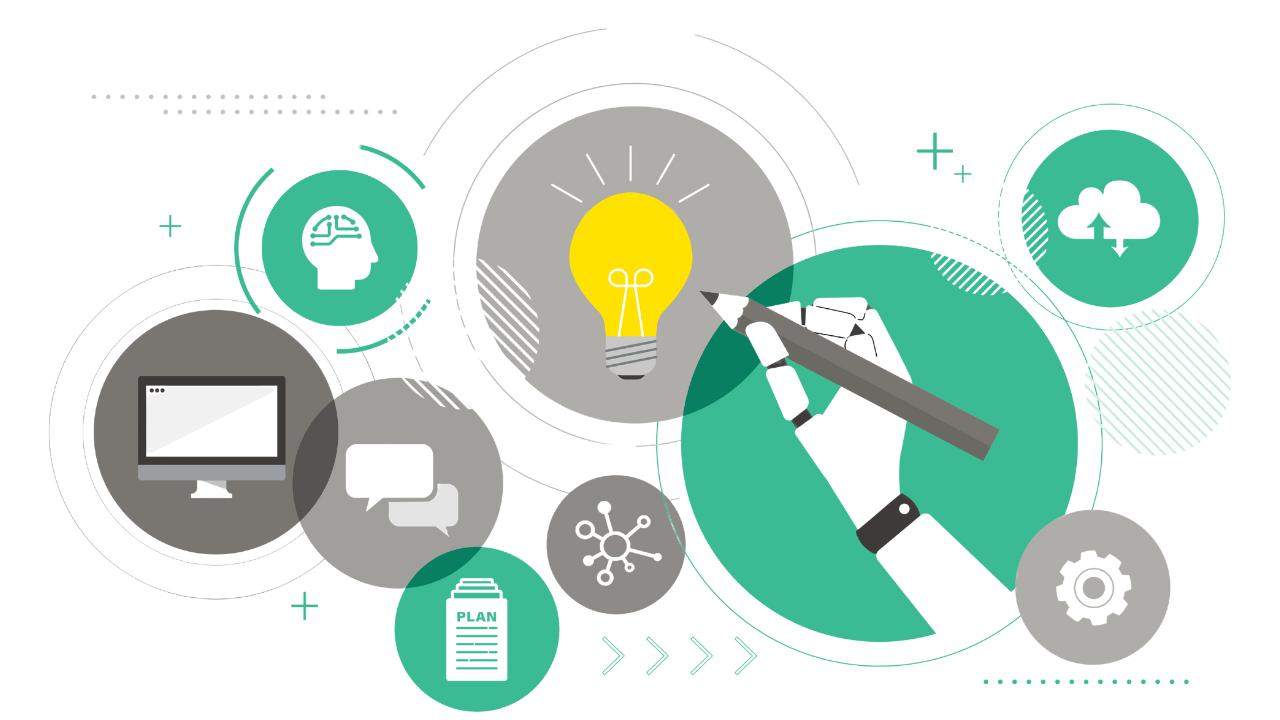Darktrace Acquired by Private Equity Firm Thoma Bravo in $5 Billion Deal
Top 10 Network Automation Tools for 2024

Network infrastructure has become the backbone of seamless operations and connectivity. But as networks get bigger and grow in complexity, manual management of network devices is becoming increasingly difficult, leading to errors, confusion, and ultimately wasted resources.
For businesses striving for efficiency, scalability, and security, network automation tools have become crucial for managing and maintaining complex networks.
What are network automation tools?
Network automation tools are software applications that allow network administrators to automate repetitive tasks, streamline workflows, and gain greater control over their infrastructure.
These tools leverage various technologies, including APIs, scripting languages, and machine learning, to automate a wide range of networking tasks and help companies manage their networks. Imagine a network administrator having to manually configure each device on a network, like a router or switch.
This would be a time-consuming and error-prone task, especially for large networks with hundreds or even thousands of devices.
Think of network automation tools as having a team of assistants who can handle these repetitive tasks for the network administrator. They can automatically configure devices, monitor network performance, and troubleshoot problems. This frees up the network administrator's time to focus on more strategic tasks, such as designing new networks or improving security.
At the heart of network automation tools are the application programming interfaces (APIs) that power network devices. These APIs provide a means of interacting with network devices, enabling automation tools to manage configurations, collect data, and perform actions in a consistent and repeatable manner.
Types of Network Automation Tools
There are many different types of network automation tools available today that automate repetitive tasks so that network administrators can focus on more strategic initiatives.
Some of the most common types of network automation tools include:
- Configuration management tools: These tools automate the configuration of network devices, such as routers, switches, and firewalls. They can be used to create and enforce configuration standards, which can help to improve network performance and security.
- Network monitoring tools: These tools collect and analyze data about network traffic and performance. They can be used to identify and troubleshoot problems before they cause outages.
- Network provisioning tools: These tools automate the provisioning of new network resources, such as virtual machines and network segments. They can help to speed up the deployment of new applications and services.
- Network orchestration tools: These tools coordinate the activities of multiple network automation tools. They can be used to automate complex workflows, such as network change management and disaster recovery.
Benefits of Network Automation Tools

Network automation tools offer a range of benefits that can help organizations improve the efficiency, reliability, and security of their networks.
Here are some of the key benefits of network automation tools:
- Increased efficiency: Network automation tools can automate repetitive tasks, such as configuration management, device provisioning, and troubleshooting. This can free up IT staff to focus on more strategic work, and it can also help to reduce the time it takes to resolve network problems.
- Reduced errors: Human error is a common cause of network outages and downtime. Network automation tools can help to reduce the risk of human error by automating tasks and enforcing compliance with policies.
- Improved security: Network automation tools can help to improve security by automating the deployment of security patches and updates. They can also help to identify and remediate security vulnerabilities.
- Enhanced scalability: Network automation tools can help organizations to scale their networks more easily and efficiently. They can automate the provisioning of new devices and services, and they can also help to optimize network performance for increased traffic demands.
- Improved network visibility: Network automation tools can provide IT staff with a better understanding of their networks. They can collect and analyze network data, and they can generate reports that can help IT staff identify and resolve network problems.
- Reduced costs: Network automation tools can help organizations reduce costs by automating tasks and reducing the time it takes to resolve network problems. They can also help to optimize network performance, which can save money on energy and bandwidth costs.
As well as these general benefits, network automation tools can also provide industry-specific benefits. For example, network automation tools can help healthcare organizations to comply with HIPAA regulations, and they can help financial organizations to comply with PCI DSS regulations.
Choosing the best network automation tool for your business
Choosing the right network automation tool for your business can be a difficult decision. There are many factors to consider, such as your organization's size, network complexity, and budget.
Before you start looking for a network automation tool, defining your needs is important. What are you hoping to achieve with network automation? What specific tasks do you want to automate? What are your pain points? Once you have a clear understanding of your needs, you can start to narrow down your options.
It’s important to also note that Network automation tools can range in price from a few thousand dollars to hundreds of thousands of dollars. Make sure you set a budget before you start looking for a tool.
Once you have a shortlist of tools, take some time to read reviews from other users, and request demos from vendors. This can help you get a sense of what you’re looking for and help you make the best decision for your business.
Top network automation tools
There are various network automation tools on the market in 2023, each with its features, capabilities and price points.
In this list, we’re exploring ten of the top network automation tools available today, providing an overview of each tool to help you choose the best solution for your organisation.
Netbrain Next-Gen
NetBrain next-gen is one of the industry’s o-code network automation and visibility platforms specially designed to make NetOps workflows more scalable and efficient. By transforming your Troubleshooting, Change Management, and Network assessment workflows at scale, the platform reduces disruptions and costs while lowering remediation times and operational risks. It understands all of your hybrid network’s devices, its topology, real-time traffic flow and desired behaviours, and maintains those behaviours to ensure your network operations are closely aligned with your business itself.
The foundation of Next-Gen is its unique multi-dimensional live digital twin of complex hybrid networks. This not only auto-discovers device details and network topology, but also connectivity, traffic flows, and network design intents of hybrid-cloud environments. It also enables organizations to harness no-code network automation for auto-diagnosis, protected change, remediation, and assessment of the network without straining network resources. To guarantee timely analysis of network conditions, it’s updated as soon as network conditions change to ensure the success of an Intent-based automation system.
Gluware
A leader in intelligence network automation, Gluware’s Intelligence Network Automation software brings a powerful layer of intelligence to help you automate complex, multi-vendor enterprise networks code-free and at scale. The platform helps companies big and small safeguard their mission-critical networks, preventing outages and enhancing security while ensuring business continuity. It can also keep multi-vendor networks in policy while enabling new features that keep pace with changing business objectives while lowering costs and reducing efficiency.
Gluware solutions are multi-vendor, multi-platform, and multi-domain, meaning you have maximum and efficient control over your network while reducing the number of network management tools your operations teams need. Gluward also provides one of the industry’s leading intelligent network automation suites to reduce network outages and ensure 100% policy compliance and is trusted across industries from finance to pharma.
ltential
As the industry’s only cloud-native network automation tool built to support hybrid-cloud infrastructure, ltential makes it easy to Accelerate your journey from manual processes to self-serve networking. The company’s SaaS platform includes a suite of network and cloud automation products designed to support every stage of your automation journey, simplifying network management from deployment, to changes, and beyond. Meanwhile, the platform’s Automation Gateway works with all your automation scripts to allow NetOps and DevOps teams to securely organize, run, and share their library of CLI automation.
Itential provides you with all the tools you need to rapidly design and build low-code orchestration workflows for automating any use case from ticket creation to ticket closure. The platform provides a unified view for managing automation and delivering self-service network consumption for your IT teams, allowing you to respond to notifications from event streaming platforms like Kafka with closed-loop, event-driven automation. It also can automate any type of network or any type of network change with a single automation environment that is vendor and technology-agnostic while seamlessly connecting IT systems with orchestration tools and custom scripts for end-to-end network automation.
BackBox
Whether you have a fully articulated network automation strategy, the BackBox platform makes it easy to automate the administration of Backups, OS updates, compliance activities and vulnerability management. Out of the box, BackBox contains over 3,000 automation pre-built by the BackBox Automation Team to help you realize value rapidly, automating tasks that solve specific problems while enabling well-defined use cases such as Backup, OS Upgrades, Compliance, and Vulnerability Management. Any of these automations in the Automation Library can also be easily customized to suit your needs using the BackBox Automation Builder – no coding required.
When it comes to disaster recovery, BackBox ensures success by validating every single one of your backups with an intensive verification process – first when it’s created, and then again before restoring. With just a single click, device configurations and OS can be restored, even restoring to bare metal to configure a replacement device. The platform also supports thousands of devices from over 180 vendors and has an API-first approach for integrating with other applications in the Network Operations Center.
Juniper Networks
Juniper Networks has a host of network automation features for all your automation needs. Its AI-powered, cloud-delivered Juniper Paragon Automaton feature, for instance, makes automating all of your network operations simple and easy – allowing you to evolve to an AIOps model that better supports your device, network, and service lifecycles. Meanwhile, its Paragon planners let you optimise network usage without impacting network performance by offering Offers real-time LSP path computation and provisioning.
Unlike networking platforms that are built upon service-specific hardware, Juniper Networks supports a software infrastructure that is independent of the hardware. Its network automation solution also uses the award-winning Mist-AI to bring unparalleled automation to the company o the campus and branch, including event correlation across the LAN and WAN, proactive anomaly detection, dynamic packet captures when issues occur, and even self-driving network operations where the infrastructure can adapt to changing conditions in real time.
Infoblox Cloud Network Automation
With advanced automation, rich API, and a host of out-of-the-box integrations, Infoblox provides powerful network automation tools to enable you to manage complex, hybrid, multi-cloud networks easily. The company’s Cloud Network Automation solution makes it possible to centrally and automatically manage DDI, DNS and IPAM provisioning – even in the most complex cloud network environments. Infoblox enables auditing and reporting across clouds for DNS records, DHCP leases and IP addresses, while its templated integrations, APIs and orchestration tools deliver faster time to value for cloud-enabled workloads. This not only reduces project times from days to minutes or seconds but also allows your company to gain unprecedented visibility into VM IP details and Drill down into IP addresses, DHCP lease and DNS histories.
Infloblox provides one central management GUI for all cloud network automation tasks, regardless of the number, size and geographical location of the clouds. It acts as a single control plane for network operations, enabling visibility and discovery into all VMs and network assets so you can focus admin resources on your top priorities. This management GUI – alongside the Cloud Dashboard Widget and new cloud reports – can save your business significant time and manual labour, reducing overall human resource requirements.
Liongard
Liongard delivers unmatched control monitoring powered by automated asset inventory and configuration change detection & response (CCDR). By automating configuration data capture across the cloud, network, applications, and endpoints, the platform makes mitigating risk easy by enabling them to detect and respond to configuration changes. Its Cyber Risk Dashboard helps you deliver continuous security posture management by swiftly detecting misconfigurations, conducting audits, and carrying out assessments to eliminate the risks caused by unknown changes and turbocharge your security and compliance practice. It also makes scaling your business easy, enabling you to manage systems across customers with rich reporting and auditing capabilities that help your team increase profitability and efficiency.
With Liongard, you gain visibility into moments during your customer’s lifecycle. The company’s MSP automation platform improves efficiency and gains fast visibility into your new customers' environments. You can build your change management process on its change detection platform and see when changes happen – even in the past – so you can better manage it and keep your customers' systems running smoothly.
BlueCat
BlueCat’s Network Automation platform enables the network team to centralise control of core DDI services and insight into the relationship between devices, users and IP addresses across the organisation. The platform automates everyday network tasks and functions by dramatically improving network availability and application performance to take repetitive time-consuming tasks off your IT team's hands. This not only eliminates many of the human errors that come with manual network changes but also minimises cloud-service delivery bottlenecks to boost productivity even faster.
BlueCat has a dedicated GitHub community with a repository of certified automation workflows, community-built code and adaptive plug-ins available out of the box. By using BlackCat for network automation, you’ll join a vibrant community of developers creating innovative approaches to automate and integrate DDI infrastructure.
Red Hat Ansible Automation Platform
RedHat’s Ansible Automation Platform provides all the tools you need to build, deploy and manage end-to-end network automation at scale. The platform makes it possible for users across your organisation to share, vet and manage automation content through simple, powerful and agentless technical implementation. It automates network permissions by packing APIs, plug-ins, inventories, and modules into playbooks that users can run to automate network configuration, security, orchestration, provisioning, and more. It also uses a human-readable YAML playbook format to make it easy for you to learn and implement – no matter your skill level.
With Red Hat, automation creators still retain the freedom to write tasks that use existing knowledge, without the operational overhead of conforming to complex tools and frameworks. Ansible is an open-source development model of the Ansible project to create an experience tailored to network automation. This open development model connects the engineers behind the Ansible Automation Platform to more than a dozen open-source Ansible projects in the community.
Progress WhatsUp Gold
Progress WhatsUp Gold is a powerful IT infrastructure and network monitoring solution that helps you find and fix network problems before end users notice them. The platform’s unique, interacting mapping interface lets you intuitively see up/down availability and performance at a glance for everything connected to your network. You can see network devices, servers, virtual machines, and cloud and wireless environments in context so you can diagnose issues with pinpoint accuracy. Navigating this map is easy to thanks to the customizable drag-and-drop dashboards that let you see the detailed status and performance of every device both on-premise and in the cloud, helping you troubleshoot faster and avoid downtime.
With WhatsUp Gold, you automatically discover and map your entire network and can know the status of network devices, systems and applications at at-a-glance. You can optimize your network traffic and bandwidth utilization, use actionable, unified, and customizable dashboards and quickly find and fix your network and server problems. WhatsUp Gold also gives you access to smarter alerting from topology-aware monitoring that understands network dependencies so you receive important alerts rather than confusing alert storms. You can send team alerts through SMS, email, web or Slack so they know about network issues long before users report them.























